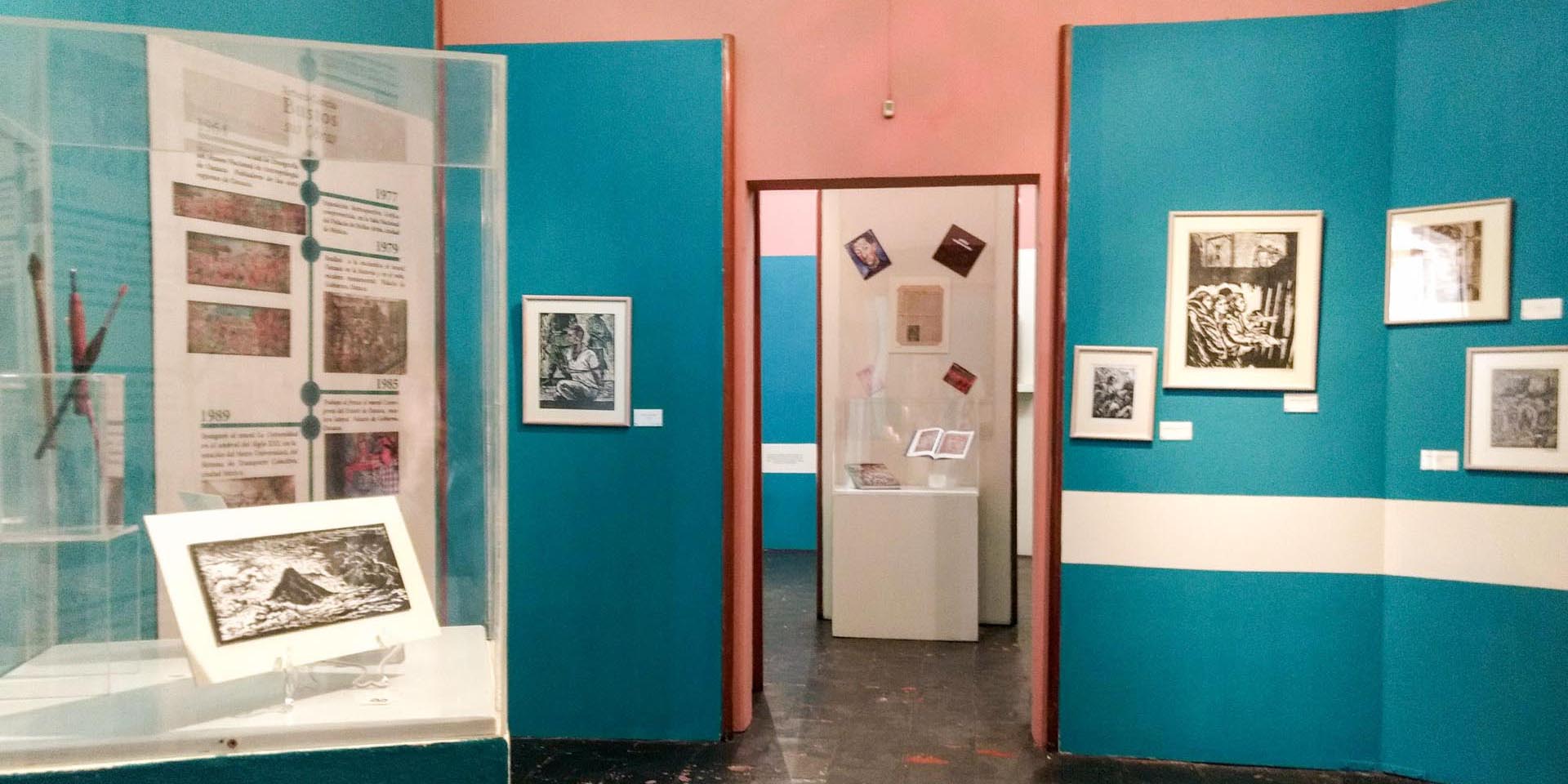History of the MUSAC
The Museum of the University of San Carlos, is a service unit of the General Directorate of University Extension, specialized in disseminating, educating, conserving, researching and exhibiting the culture, artistic historical heritage and scientific knowledge of the Alma Mater. The first building built for the University in Nueva Guatemala de la Asunción was designated for its operation upon its transfer in 1779, declared a National Monument for its historical and aesthetic value in 1970, and a Historic Monument of USAC in 1997, also known as “Antigua Facultad de Derecho” (former Law School).
The creation project was in charge of Licda. Edna Núñez de Rodas and it was approved on September 24, 1980, subsection 3.3.6.3 of Minutes No. 46-80 of the session held by the Higher University Council, in the Rector’s Office of Lic. Mario Dary Rivera. Time passed, and the rector Lic. Roderico Segura Trujillo promoted the restoration work on the building that had been severely damaged by the 1917,1918 and 1976 earthquakes.
During the administration of Dr. Alfonso Fuentes Soria, the budget allocation for the operation of the Museum was achieved and it was officially inaugurated on the night of June 22, 1994, under the coordination of Gladys Elizabeth Barrios Ambrocy who served for 24 years in MUSAC as Director. Three exhibition halls were opened since then: Historical Hall of the University, Hall of Cultures, Art Gallery and the Educational Program Hall with the purpose of preserving and disseminating the cultural values of the University and the country.
Throughout its 25 years of operation MUSAC has carried out more than 300 exhibitions, among the most notable:
“First Century of University Life”, “Majolica Ceramics”, “Contemporary University Treasures” and “Recovering What is ours”, with which opened the museum in 1994.
“Evocation of Hormigo…the Marimba” 1996, “100 years of Huelga de Dolores” 1998, “Knowing Peten” 2001, “Izabal“ 2000, “Flavour and Aroma” 2009, “Tribute to Arturo García Bustos”, “Galas of the Mayan Man” , “Renaissance of Dissection” 2017, Magic Quetzaltenango ”2018.
Itinerant Exhibitions: “The Engraving, Testimonies of Guatemala ”, National Palace of Culture 2010, “In a village of La Mancha… Don Quixote ”, Railway Museum, 2007, “Los Mayas” Museum of Santiago Sacatepéquez 2014, “Traditional Guatemalan Toy”, Rectory 2016. “USAC Tricentenaria”, Rectory 2019.
Among the international exhibitions: “Kites and tops of Japan”, 1998, “Guatemala from the air” with Argentina 1996, “The Spirit of Israel”, “The Lord of Sipán” with Peru 2003, “Pure Air, Life” with Switzerland , “Famous in Cartoon”, with Israel 2007.
In addition to these exhibitions and others, there are more than a thousand cultural educational activities, including guided tours, animated tours, expert guided tours in Guatemalan Sign Language -LSG-, workshops with artisans, art workshops, expert guided tours, demonstrative workshops, productivity workshops, training for teachers, museum staff, USAC administrative staff, courses, conferences, lectures, round tables, colloquiums, discussions, forums, educational concerts, artistic presentations, live art, academic and tourist tours, among others, which today are traditions, among the most relevant are: Marimba Exaltation Program, International Museum Day, Cultural Anniversary Week, Guatemalan Cultural Heritage Day and the Historic Center Festival.
The Museum has been the birthplace of projects that to date have occupied an important space in the cultural sphere, such as the Festival of the Historic Center; for eight years it managed the presidency of the Association of Museums of Guatemala being also its headquarters; the Committee of the International Council of Museums was created here in Guatemala; the Night of the Museums within the framework of the celebration of the International Museum Day and A Day in the Museums within the framework of the Festival of the Historic Center.
Since its opening, MUSAC has become a meeting place for people linked to art, science, history and culture in general, as well as a means of disseminating university work and promoting knowledge.
MUSAC’s 25 years are a reality today thanks to the support of artists, artisans, educators, students, university students, professionals, media, staff, volunteers, friends of the museum and its visitors who are the greatest motivation and future of the Museum! Long life to MUSAC!






